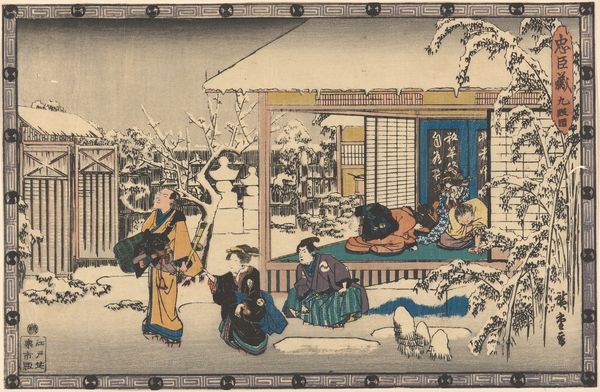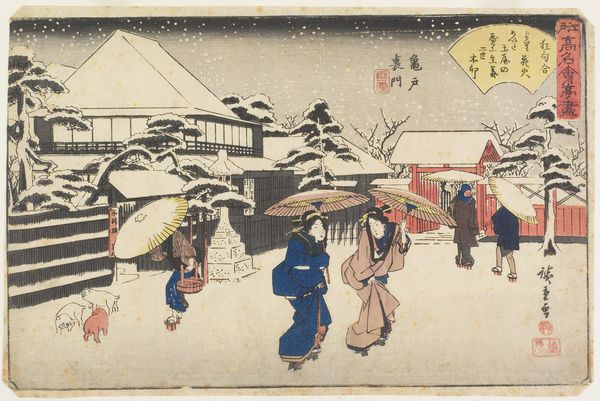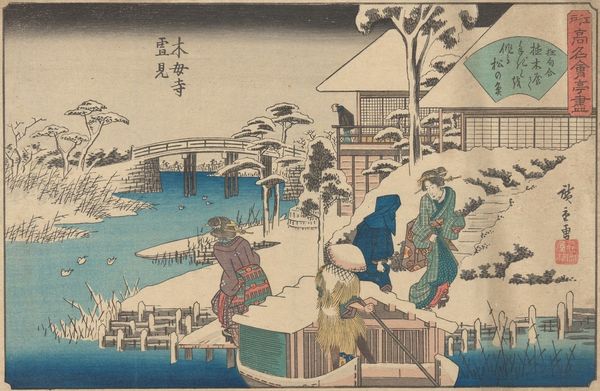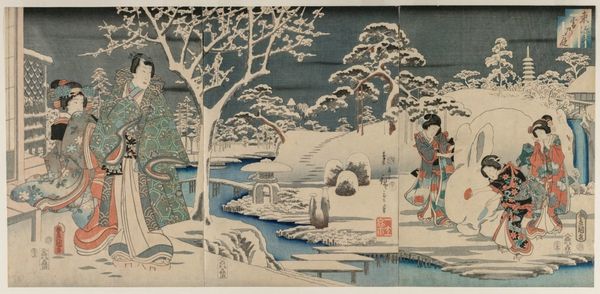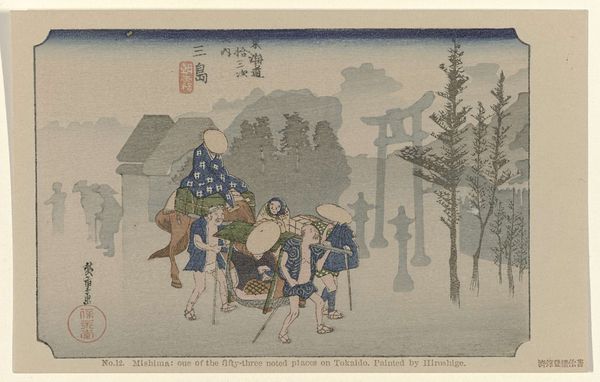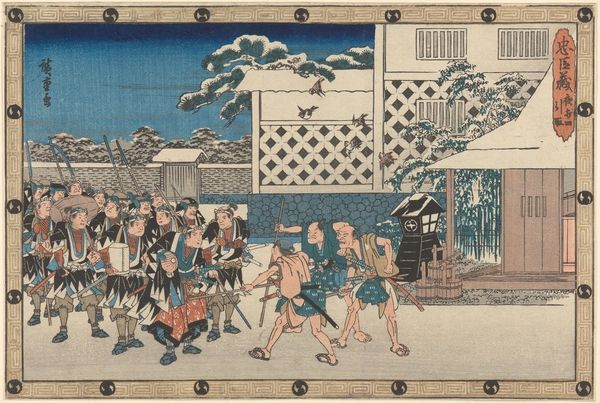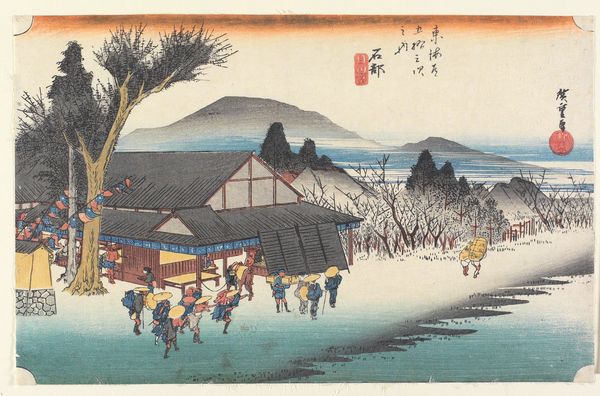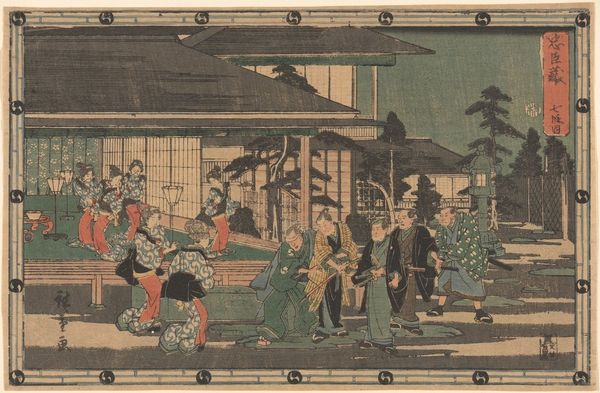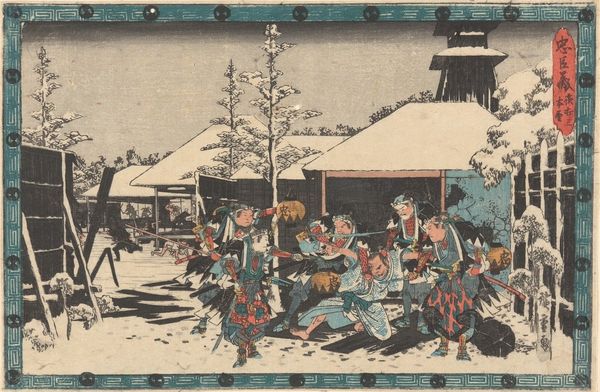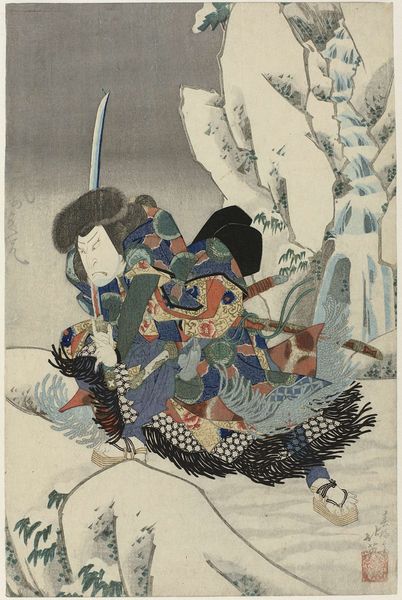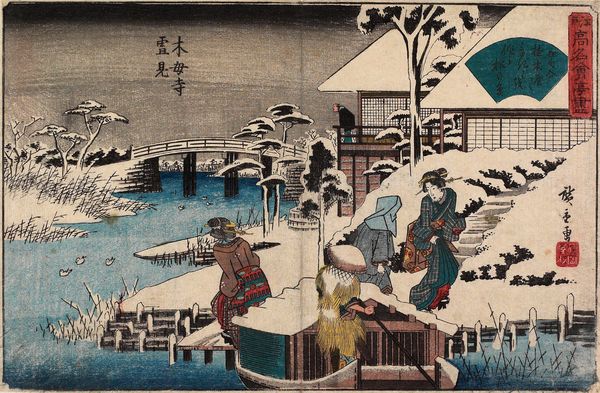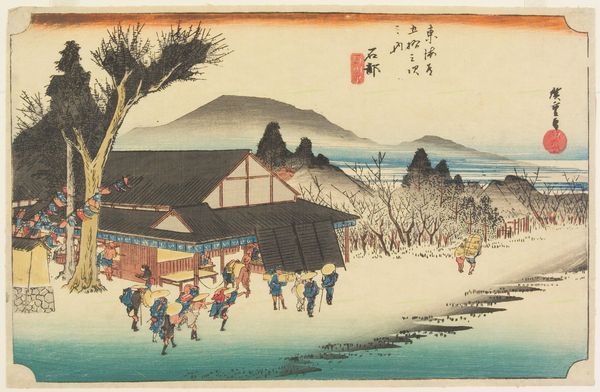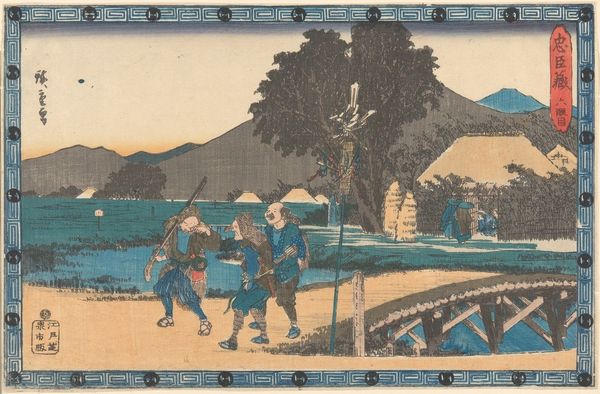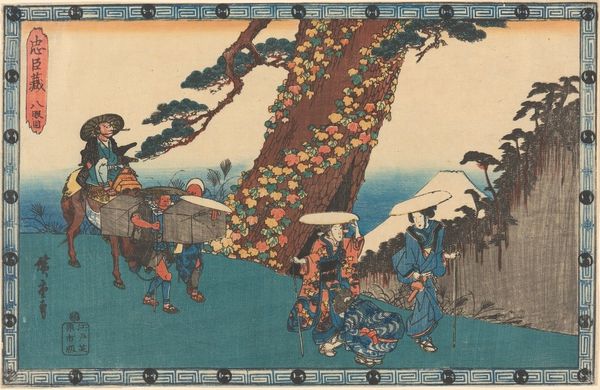
print, woodblock-print
#
narrative-art
# print
#
asian-art
#
landscape
#
ukiyo-e
#
coloured pencil
#
woodblock-print
Copyright: Public Domain: Artvee
Editor: This is "Capture of Moronao in Snow," a 19th-century woodblock print by Utagawa Hiroshige. It depicts a chaotic scene in the snow. What do you see in this piece that brings it to life, culturally? Curator: Beyond the dynamic composition and skillful use of the woodblock technique, I see a narrative deeply embedded in the political landscape of its time. Ukiyo-e prints like these often served as veiled critiques of the ruling class. Consider how the snow, a symbol of purity and cleansing, might be ironically juxtaposed with the violent act of capture. Editor: That's interesting. The figures' costumes seem quite elaborate for such a cold setting, almost performative. Curator: Exactly. It invites us to question the constructed nature of power and the roles people play within a strict social hierarchy. Who is being captured here? What power dynamics are at play in this ‘capture,’ and is the artist commenting on those power structures by representing the story through the woodblock medium? The artist may be referencing a specific event and asking what implications are made, or questions about how identities may have changed for all persons represented due to these implied actions. Editor: It seems more nuanced than just a simple historical scene. I initially thought of it as just a visual experience but now appreciate the narrative Hiroshige constructs about cultural commentary. Curator: Absolutely. And, it prompts questions: who gets to tell this story? What voices are silenced, and how does the visual language of ukiyo-e either reinforce or subvert those silences? By looking through an intersectional lens, we see not just a capture, but potentially a critique of the very systems that enable such captures to occur.
Comments
No comments
Be the first to comment and join the conversation on the ultimate creative platform.
